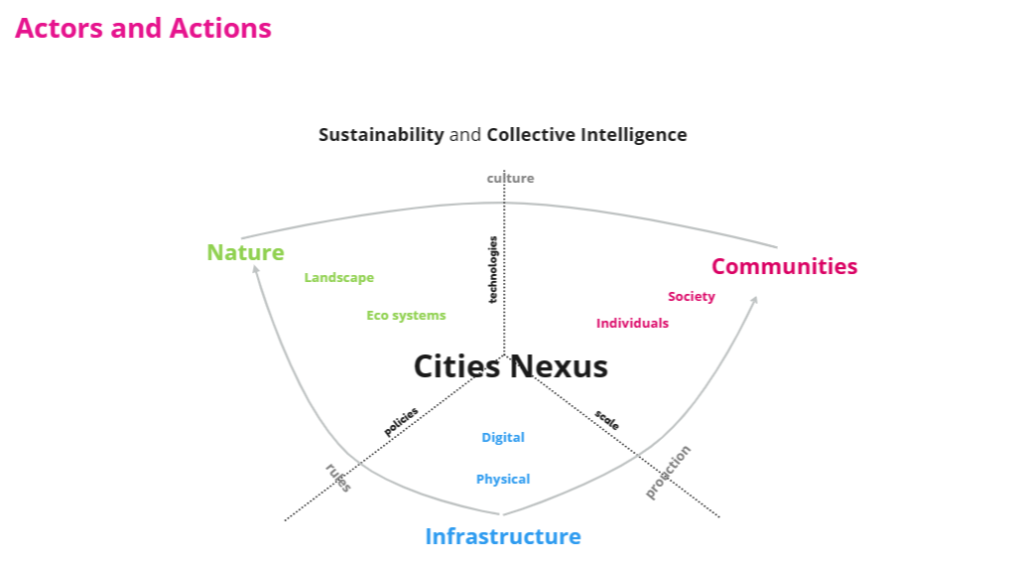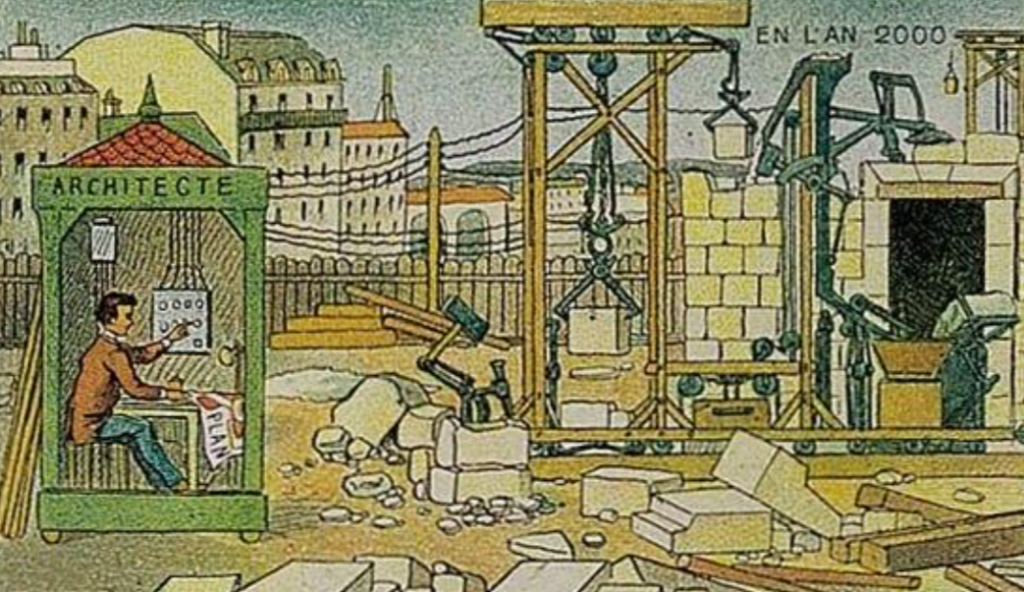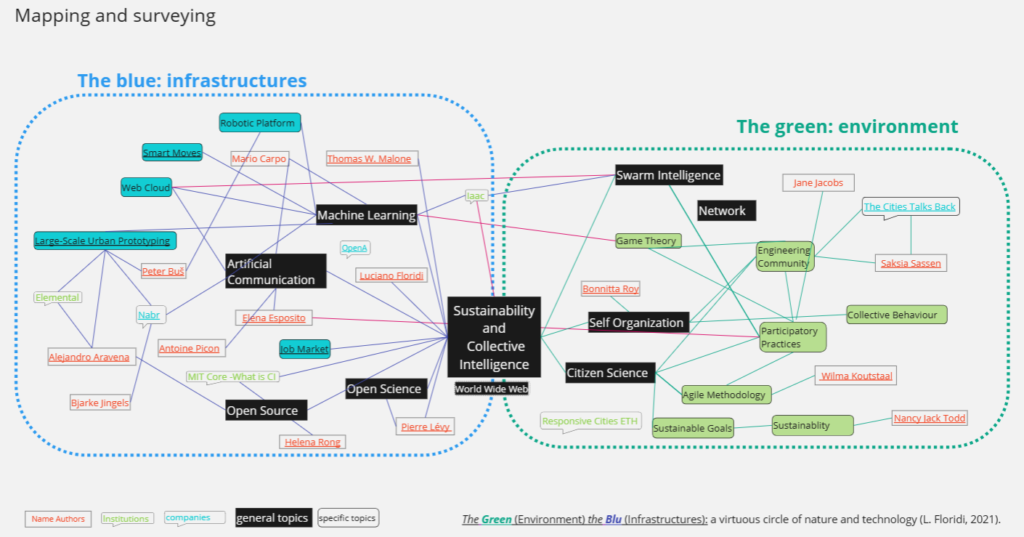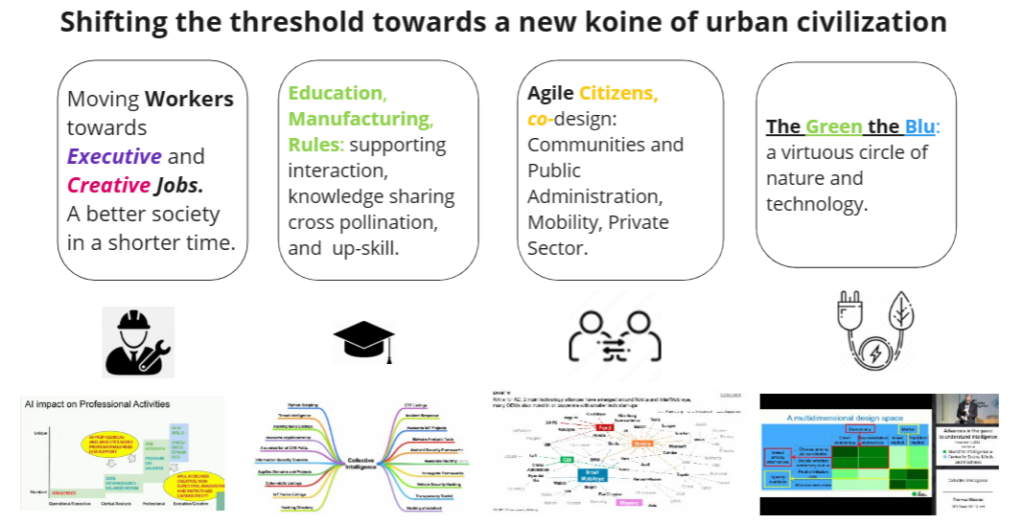Between groupthink and individuality
the conflicting human impulses toward civilisation and social organization”
(William Golding, The Lord of the flies, 1954)
-How does collective design ensure/produce better environments?
-How collective intelligence can affect design decisions?
-How top-down and bottom- up projects are implemented?
–Open data vs privacy | Participatory vs autonomy | Crowdsourcing / Crowdfuding



Introduction
To what extent collective intelligence can affect design decisions to ensure better environments? How top-down and bottom-up projects are implemented in different contexts and with what rules? How much participatory processes are truly autonomous?
This set of problems allows us to identify actors and actions around the two concepts we discuss here: sustainability and collective intelligence. The problems can have different scales, differentiated technologies available, ways of approaching policies that are not always comparable.
The definitions of sustainability and collective intelligence that are encountered in different contexts are multiple and have different declinations. Within the framework of the proposed reasoning, the following have been assumed.
Therefore, considering as precedents some important experimental researches carried out since the Fifties and Sixties, the text comments and illustrates the useful references for carrying out some operational tests by integrating machine intelligence and some design thinking inputs (prompts: urban texture and the quality of the environment, health service, food delivery) by selecting the urban environments most familiar to the authors (Rome, Athens, Riyadh, Singapore), highlighting limits and potential of the most discussed tools of the moment and trying to specify definitions and build a critically defined bibliographic field.

From Industrial Revolution(s)… to Ecological Awareness… to Public Speeches
Sustainability. In ecological terms, sustainability is defined as the ability of an ecosystem to maintain its essential functions and conserve biodiversity over time. (N. Jack Todd-John Todd, 1994). The concept has been transferred also in other fields of knowledge such as development, economics, etc. In 2015 the United Nations established The Sustainable Development Goals (SDGs) or Global Goals are a collection of seventeen interlinked objectives designed to serve as a “shared blueprint for peace and prosperity for people and the planet, now and into the future”. The SDGs emphasize the interconnected environmental, social and economic aspects of sustainable development by putting sustainability at their center.
Collective Intelligence is about people sharing their knowledge and insights. This is nothing new if you think about the historical precedents, especially for cities’ culture, when cultural koiné emerged – Athen V sec B.C. (Politeia Representation), Renaissance (Ideal City), Islamic Architecture (Environmental Treatments), Paris Enlightenment ’700 (Hygiene, City Health), London ’800 (Industrial Revolution), New York ’900 (The triumph of the city) etc. – as it is not new that workers lose their job since this is disappeared or has been taken over by machines. It has already happened since the start of the Industrial Revolution. As it was already clear that it is difficult that one man can be able to build a cathedral, or one aircraft and it can be demonstrated that on the Planet Earth there are entities more intelligent than men which are groups of men. Therefore, the idea that Intelligence does not arise only in individual brains; it also arises in groups of individuals (Bonnitta, 2018; Malone, 2018).

(Image by Villemard, 1910)
The bibliography considered involves literary texts that analyze the relationship between collective thought and individuality (George Orwell, William Golding), essays written by scholars in different field from the Fifties-Sixties (Nicholas Negroponte, Christopher Alexander, Ian McHarg) a very fervent moment for studies on the relationship between man and machine and the environment, especially at MIT in Boston. Many of those themes are relevant again today, in a context in which the tools and the ability to deepen are more advanced (Mario Carpo, 2023; ICCCI 2023).
All these concepts are referred to humans and to communities, to the living environments more than to machines or digital infrastructures. However, what is an emerging property is the advancement of social and technological intelligence, using Artificial Communication (Esposito, 2021) and Machine Learning (Bernstein, 2022). Therefore, communities deserve a deeper understanding of those processes with the scope to implement effective solutions through agile methodologies, more people oriented and adaptable to changes (Koutstaal, 2011).
City is still “a space where the powerless can make speech, presence, and politics”. But the city also has its own language: the “interactive deployment of people, firms, infrastructures, buildings, projects imaginaries, and more, over a confined terrain, produces something akin to speech” (Sassen, 2019).

The changing nature of Jobs within Society: lights and shadows
The problem of collective intelligence, considered in the urban context, has a significant impact on the labour market, on academic training, on the quality of life of communities (common spaces, mobility, services), on the achievement of a constructive integration between nature and technology, ecosystems and infrastructures. We have seen the substitution of humans with machines in algorithmic logic for executive and analytical works, now we expect to see what will happen to decision-making and creative work (Malone, 2019; Colao, 2023). Observers say we should move the workers in the future from AI Prep-clerical and analytics work professionals (clerical/analysis) need less support, through Job redesign, towards AI non repetitive, innovative and instincts let capabilities (executive/creative).
“AM: (…) How can designers augment their capacities to work with machines? PFY: (….) There is no longer a one-way relationship between architects and digital tools, as the former adapts to digital technology. New possibilities for collaboration, made possible by this robotic platform, challenge traditional design authorship and question authority within the cycle of architectural design and construction” (Markopoulou-Yuan, 2020).
Depending on the social, economic and political context, in recent years policies for sustainable urban development have been promoted, such as the New European Bauhaus, NEOM’s “The Line” project in Saudi Arabia, and the Singapore Green Plan 2030. While waiting for the results, we can consider them for the different top-down and bottom-up approaches. The latter has a virtuous case in the Super Barrios project promoted in Barcelona by IAAC.

Parallelizing problems: “playing” with machine intelligence identifying the potentiality and limitations of the tools
“Decisions and actions by individuals and organizations based on information they obtain in their urban environments effectively solve the planner’s problem. They do so by ‘parallelizing’ the problem and its inference and computations through the simultaneous pursuit of local adaptations that, in principle at least, can maximize each agent’s preferences under constraints (budgets, knowledge, time, etc.). This self-organizing dynamics is not guaranteed to produce the best outcomes citywide, though» (Bettencourt, 2014).
Using our thoughts, and machine intelligence, from very far locations. and even in seconds, we can play with our cities. We also wondered which apps are the most used in the cities where we live and which ones we use most frequently. How do cities gather information about their residents through passive crowdsourcing methods, and in what ways can this data be leveraged to enhance urban design and create sustainable cities? The results of these free tests allow us to have a starting point to continue with a discussion on possible alternative approaches to the urban problems integrating methods for the best possible outcome.

Bibliography
Mario Carpo, Beyond Digital, Design and Automation at the End of Modernity, MIT Press, 2023.
Vittorio Colao, Vittorio Colao: “Algorithms collude and raise prices for consumers so they don’t go to jail” Interview Fintech Talks Huff Post, 10 November 2023. https://www.huffingtonpost.it/economia/2023/11/10/news/vittorio_colao_gli_algoritmi_colludono_e_alzano_i_prezzi_per_i_consumatori_perche_non_vanno_in_galera-14093566/
Phil Bernstein, Machine Learning: Architecture in the age of Artificial Intelligence, RIBA Publishing, 2022.
Elena Esposito, Artificial Communication: How Algorithms Produce Social Intelligence, MIT Press, 2021.
Luciano Floridi, The Green and the Blue: A New Political Ontology for a Mature Information Society, SSRN, 2020.
Thomas W. Malone, Superminds: The Surprising Power of People and Computers Thinking Together, Little, Brown Spark, 2018.
Markopoulou, Areti, and Philip F. Yuan, Design Integration: Global Technological Advancement and Local Culture, in Bob Sheil at al (ed by), Design Transactions: Rethinking Information Modelling for a New Material Age, UCL Press, 2020, pp. 92–97.
Saskia Sassen, But Can It Talk Back? Conversation with the city, 2019; https://theatrum-mundi.org/library/but-can-it-talk-back/ (visited December 2023).
Bonnitta Roy, How Self Organization Happens and why you can trust it, 2018; https://www.youtube.com/watch?v=5UFk9F2ohhE (visited December 2023).
Lu? Bettencourt, The uses of big data in cities, “Big data”, 2 (2014).
Wilma Koutstaal, The Agile Mind, OUP, 2011.
Nancy Jack Todd, John Todd, From Eco-cities to Living Machines. Principles of ecological Design, North Atlantic Books, 1994.

